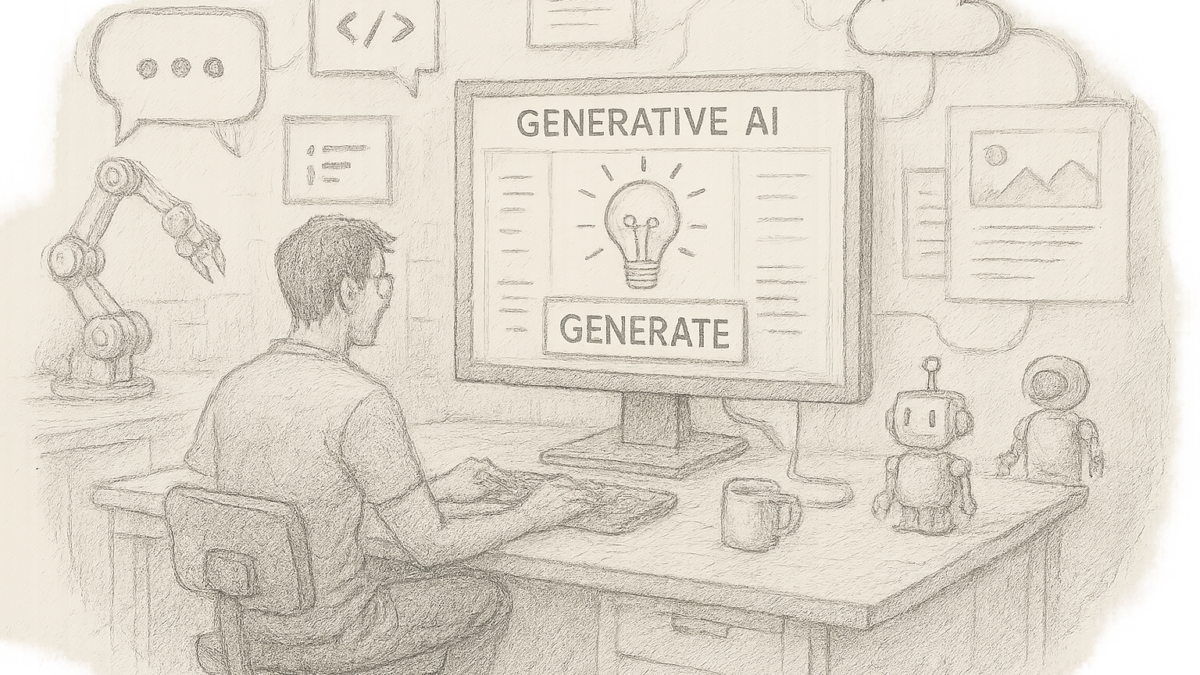What Is Generative AI? How It’s Reshaping the Future of Tech & Business
Table of Contents
Introduction
The rise of Generative AI (GenAI) marks a new era in artificial intelligence—one where machines are no longer just analyzing data, but creating entirely new content, designs, code, and even ideas. From text and images to music and 3D models, GenAI is redefining what’s possible in digital innovation.
But what exactly is Generative AI, how does it work, and why is it the hottest topic in tech today? Let’s break it down.
What Is Generative AI?
Generative AI refers to a class of artificial intelligence models capable of creating original content from raw data inputs. Unlike traditional AI that focuses on classification, detection, or prediction, GenAI is designed to generate new outputs—such as:
- Text (e.g., ChatGPT)
- Images (e.g., DALL·E)
- Code (e.g., GitHub Copilot)
- Audio and music (e.g., Suno)
- Videos (e.g., Sora)
- 3D models (e.g., Nvidia Omniverse)
At its core, GenAI uses deep learning, particularly transformer models and neural networks, to understand patterns and generate results that mimic human creativity.
How Does Generative AI Work?
Generative AI typically leverages models such as:
- Large Language Models (LLMs) like GPT, BERT, or Claude
- Diffusion models for image and video generation
- GANs (Generative Adversarial Networks) for synthetic content
- Autoencoders and VAEs (Variational Autoencoders)
Here’s a simplified workflow:
- The AI is trained on massive datasets (text, image, code, etc.).
- It learns the statistical structure and semantics of the data.
- When given a prompt, it generates a new output based on that training—without copying anything directly.
For example, ask a GenAI chatbot to write a poem, and it creates a unique one every time.
Top Applications of Generative AI
Content Creation
- Blogs, social media captions, product descriptions
- Video scripts, ad copies, and marketing assets
- AI voiceovers and podcast generation
Design & Visual Media
- Logo and UI design
- 3D model generation
- Concept art for gaming and animation
Software Development
- Auto-generated code snippets
- Code refactoring suggestions
- Bug identification and documentation
Healthcare
- Synthesizing clinical notes
- Medical image enhancement
- Drug discovery simulations
Education
- AI tutors for personalized learning
- Auto-generated quizzes and lesson plans
- Real-time summarization of learning material
Popular GenAI Tools to Know
| Tool | Use Case |
|---|---|
| ChatGPT | Conversational AI & text generation |
| DALL·E | Image creation from text prompts |
| Midjourney | AI-powered artistic visuals |
| Jasper | AI writing assistant for marketers |
| GitHub Copilot | Code generation and auto-completion |
| RunwayML | Video editing with GenAI tools |
| ElevenLabs | Realistic AI voice generation |
These tools are increasingly integrated into enterprise workflows, SaaS platforms, and creative industries.
GenAI’s Impact on Business & Innovation
Generative AI is transforming the way businesses operate by:
- Reducing creative bottlenecks
- Accelerating content production
- Enabling hyper-personalized customer experiences
- Unlocking innovation in product design
For example, marketing teams use GenAI to scale campaign content, while developers accelerate app building through code suggestion tools. It’s no longer just about doing things faster—it’s about creating things never imagined before.
Ethical Considerations & Challenges
While GenAI offers immense promise, it also raises key concerns:
- Misinformation & deepfakes: Fake content that appears convincingly real
- Data privacy: Training models on proprietary or personal data
- Bias and fairness: Outputs reflecting societal or data-based biases
- Job displacement fears: Automation of creative and technical roles
Companies must deploy responsible AI frameworks, conduct bias audits, and ensure transparency to maintain ethical integrity.
What’s Next for Generative AI?
The future of GenAI is focused on:
- Multimodal AI: Combining text, video, audio, and images for richer outputs
- Agentic AI systems: AI agents that perform tasks autonomously
- Industry-specific models: Fine-tuned AI for law, finance, healthcare, and more
- Open-source models: Community-led alternatives to proprietary tools
As these models evolve, GenAI will shift from being a novelty to a strategic advantage across sectors.
Final Thoughts
Generative AI is not just a tech trend—it’s a creative revolution. From marketers and designers to developers and educators, anyone can now leverage AI to ideate, produce, and innovate at scale.
The key to unlocking its potential lies in understanding its capabilities and applying it ethically and strategically.
Call to Action
Curious about how your business can integrate GenAI into your workflow?
👉 Subscribe to our newsletter for the latest in AI trends, tools, and guides—or get in touch to explore GenAI-powered solutions tailored to your needs.
You May Also Like: What Is Google Cloud & How It Helps Businesses Grow





